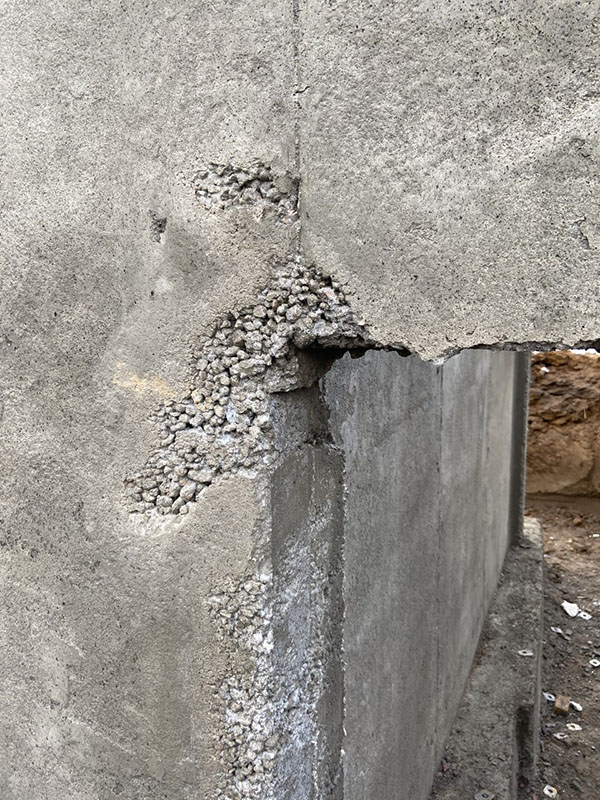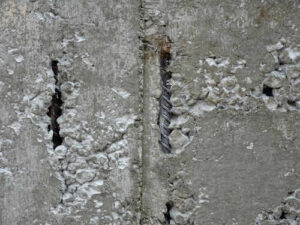One important aspect that EVstudio Field Inspectors check when completing a wall strip observation is to assess for any honeycombing in the concrete. Honeycombing occurs for a variety of reasons, which include: improper vibration during the pour, an insufficient amount of fine material in the concrete mix leading to a buildup of larger aggregate, incorrect water to a concrete ratio in the mixture, or in areas where joints are located that have excessive amounts of steel reinforcement.


Why It Is Bad
Honeycombing reduces the load-bearing capacity in structural walls as well as creates areas where water and moisture can seep in and cause additional structural damage. Most of the time honeycomb is truly superficial, but it needs to be inspected correctly to determine so. If honeycomb goes unrepaired it can have bigger impacts on the overall strength and longevity of the foundation. Honeycomb can affect how strong the concrete is in an area. It can allow water and moisture to penetrate the structure. It can also leave crucial re-bar and metal supports exposed causing it to rust and break down vital structure.
How Much Is Too Much?
A properly poured concrete foundation will last 100-200 years. The waterproof coating that is most commonly used in today’s home has a life expectancy of 30 years. So, if the foundation of a building that is properly poured with no honeycomb can last up to 200 years and the coating that protects that foundation only lasts 10 years and you see honeycomb with water penetrating voids and exposed re-bar, ask your self how much honeycomb is too much? It does not matter how good of a foundation coating is put on; the life expectancy is significantly less than the foundation itself. If the foundation has honeycombed no matter how small or superficial it should be addressed to allow the foundation to have the longest life possible.
How To Fix
The proper way to repair honeycombing in walls is to isolate the area and chip away any loose areas of aggregate, clean the area of any dirt or debris, and apply a non-shrink grout.
EVstudio Field Inspectors will take note of any honeycombing, snap photos of the areas and report these to the superintendent on-site for repair by the concrete company. To learn more about EVstudio’s Field services, click here.
Websites Referenced:
https://theconstructor.org/practical-guide/honeycombs-in-concrete-and-remedies/6889/
https://www.cesinspect.com/concrete-honeycomb/










